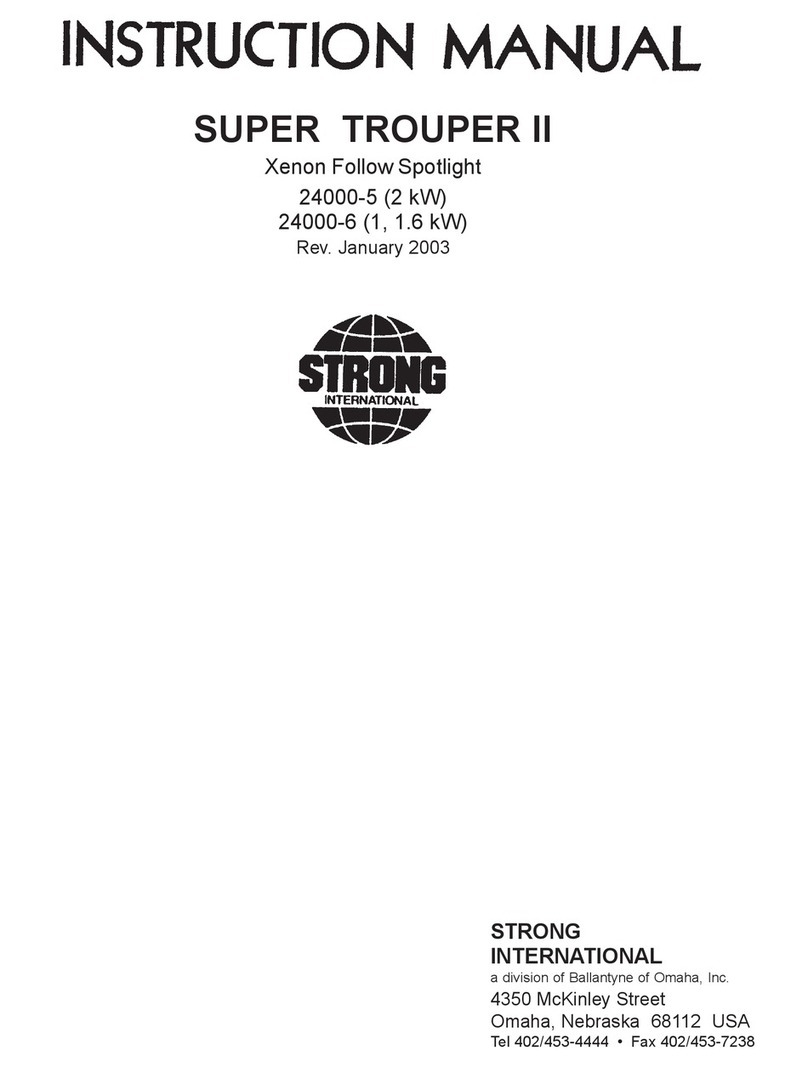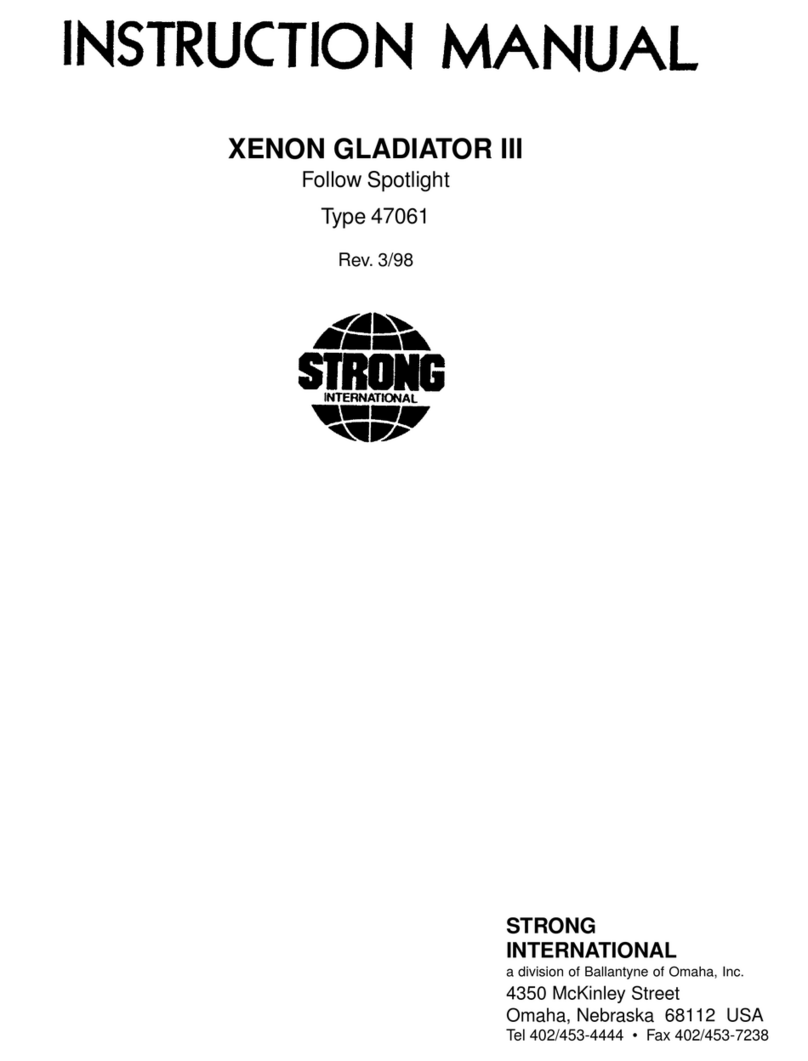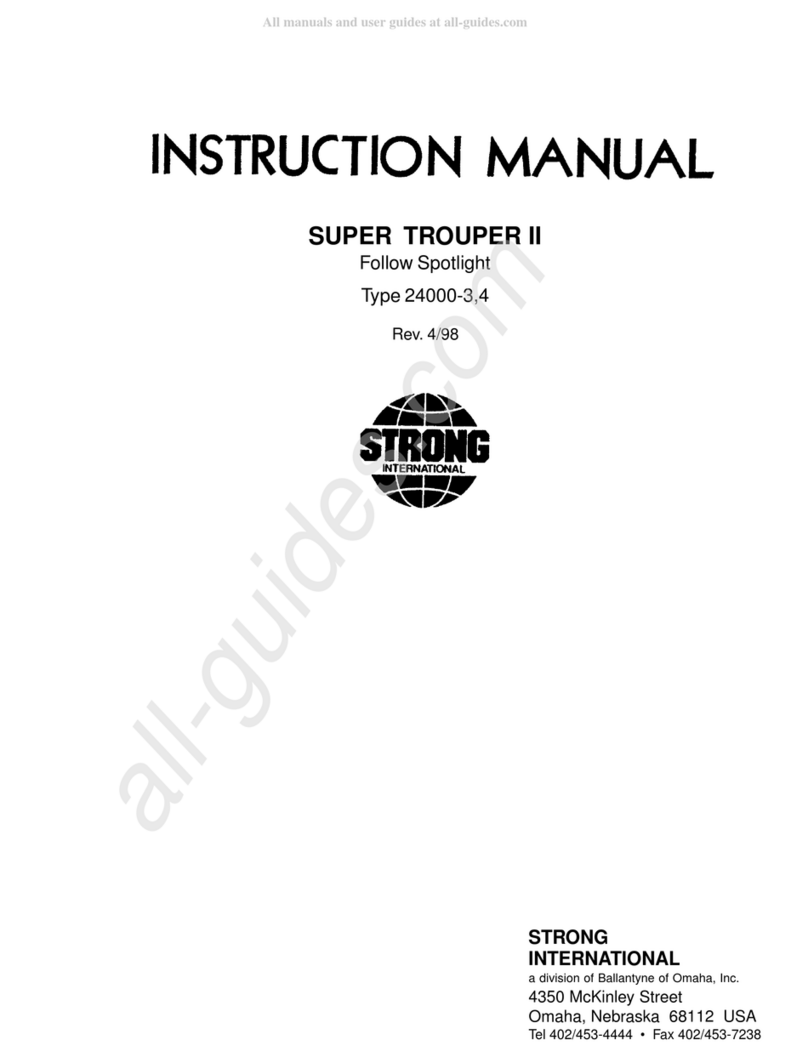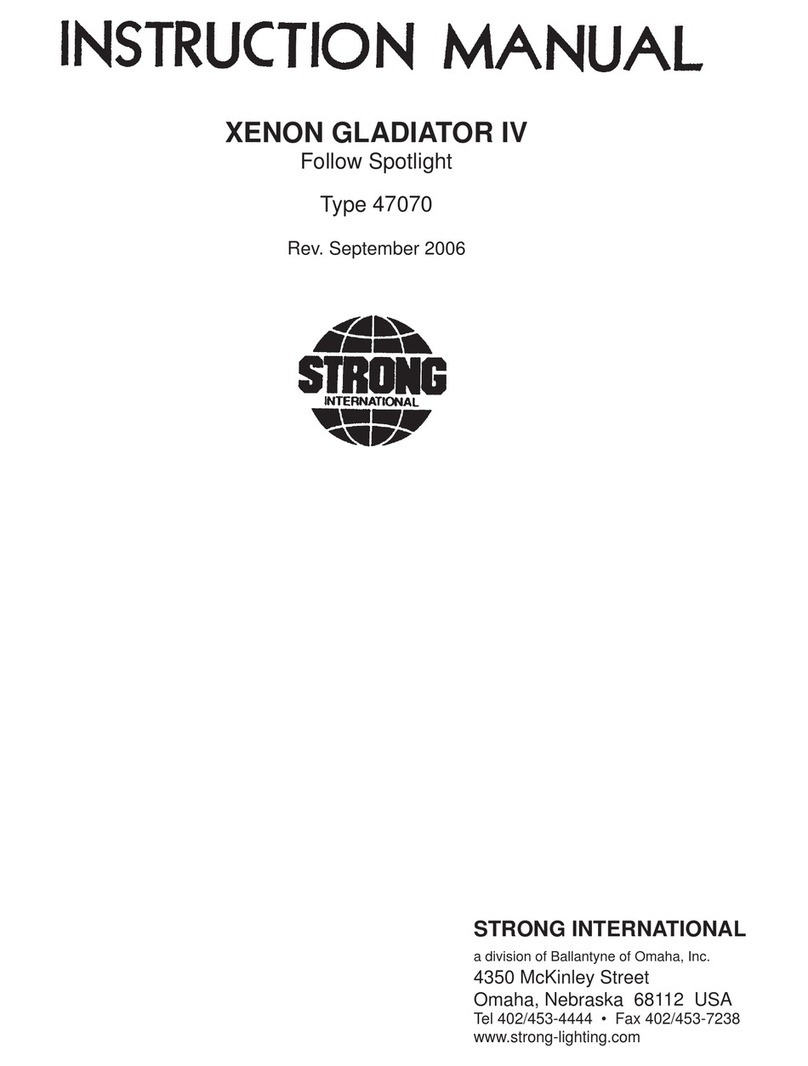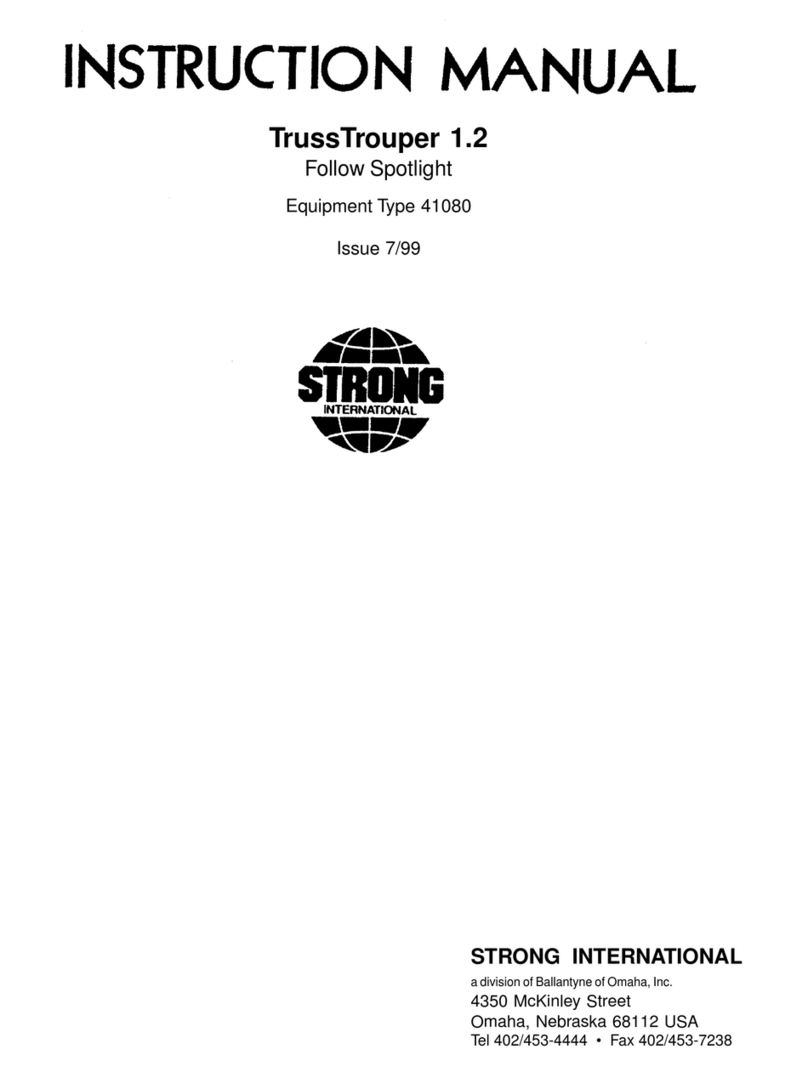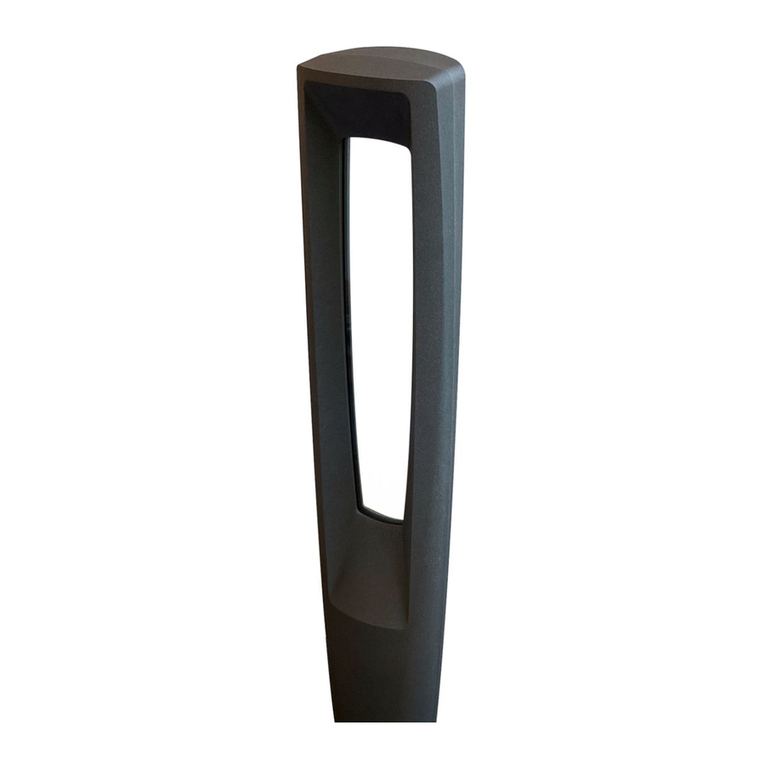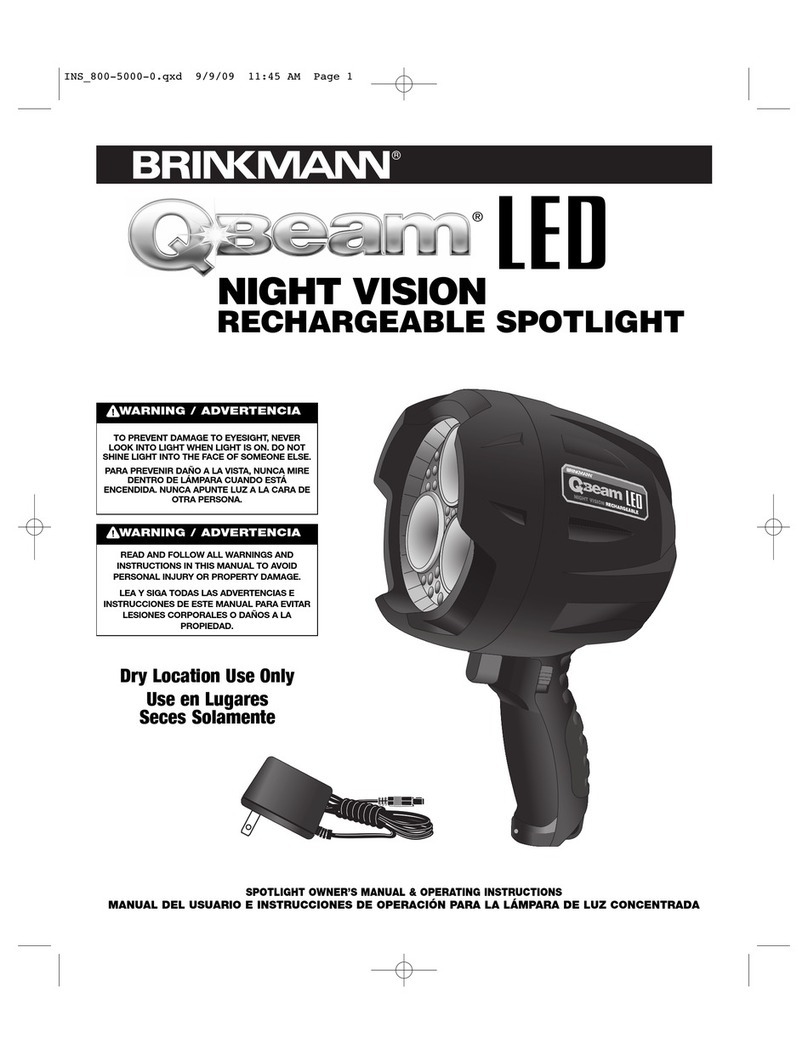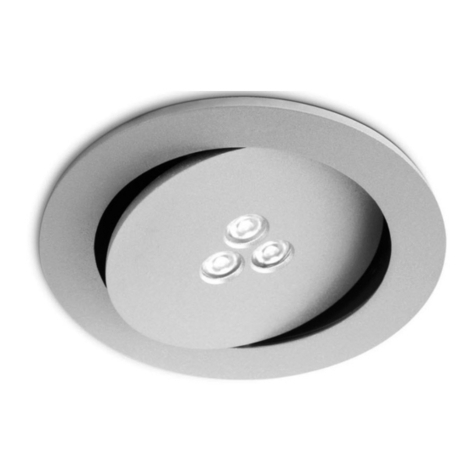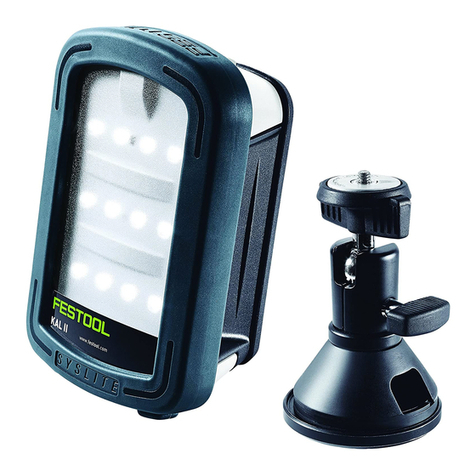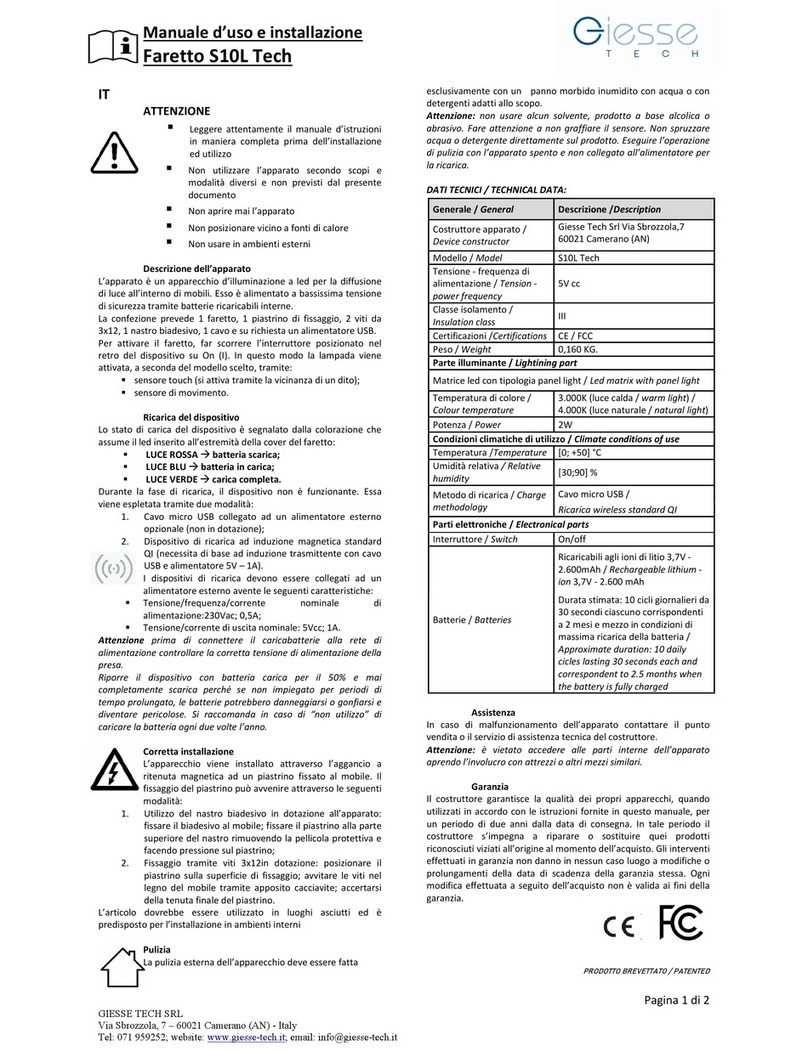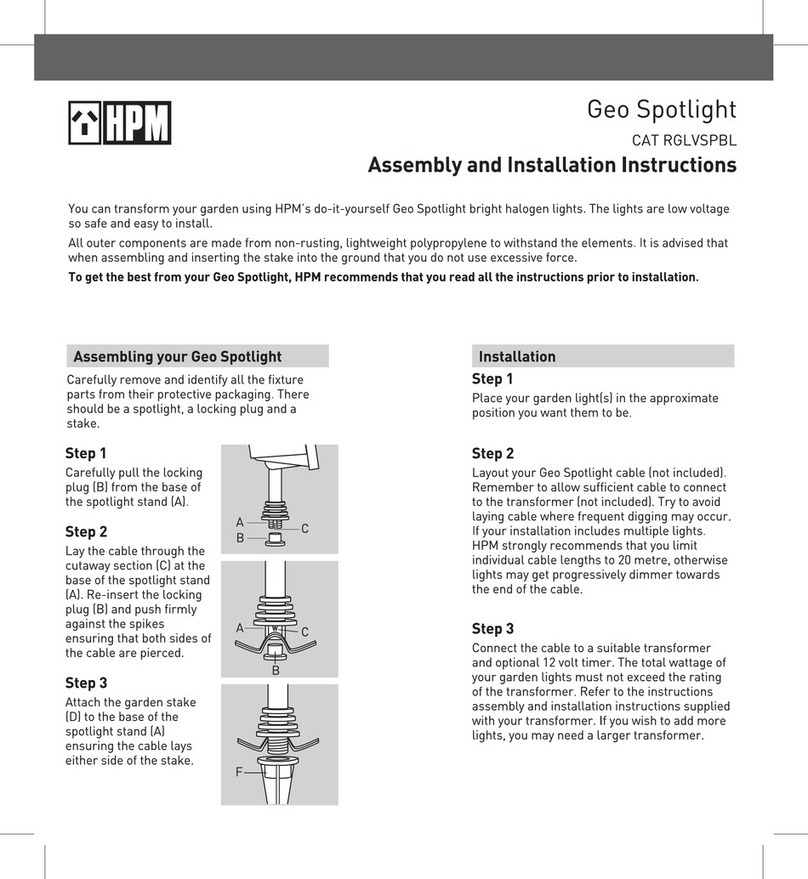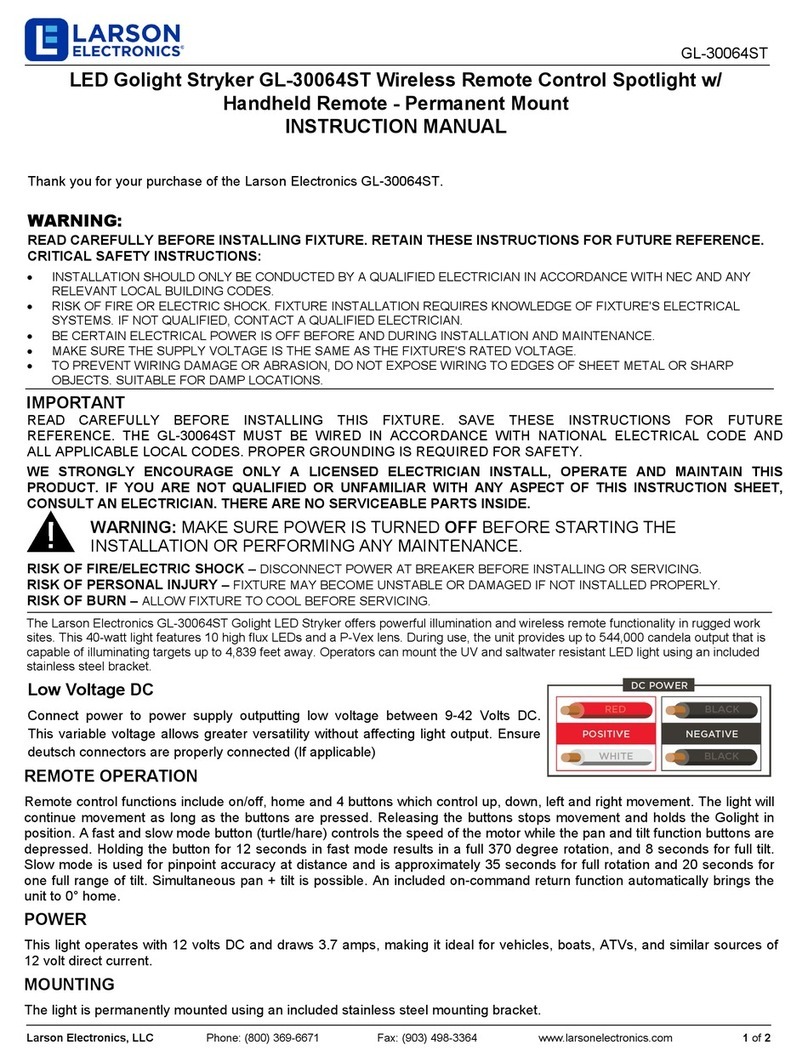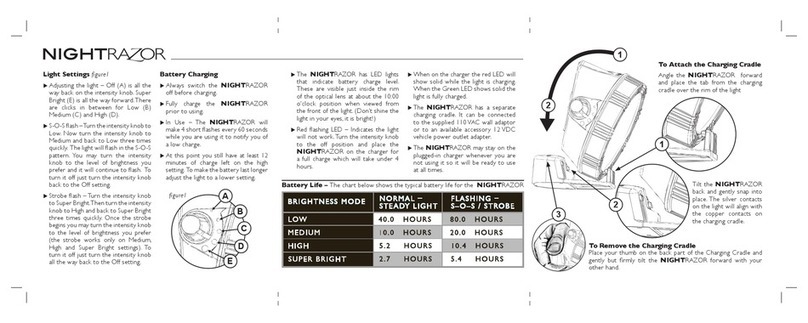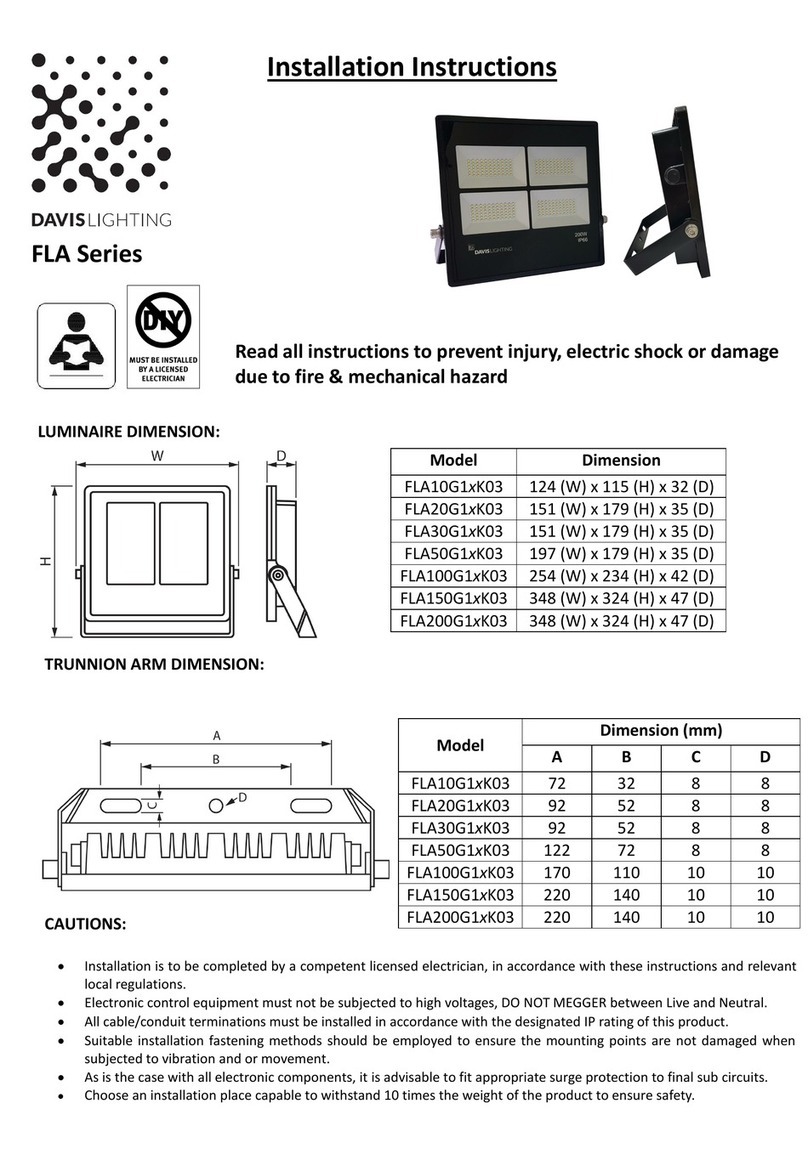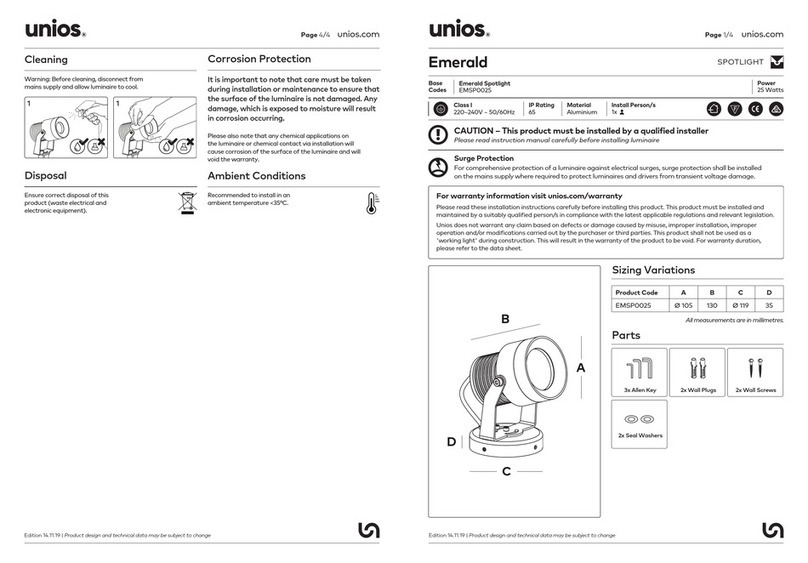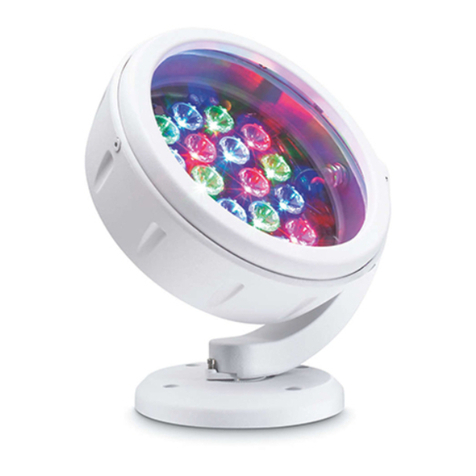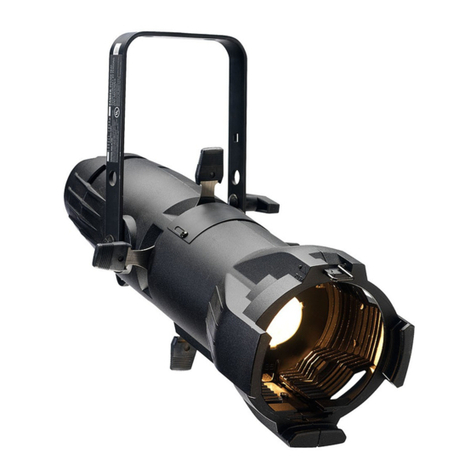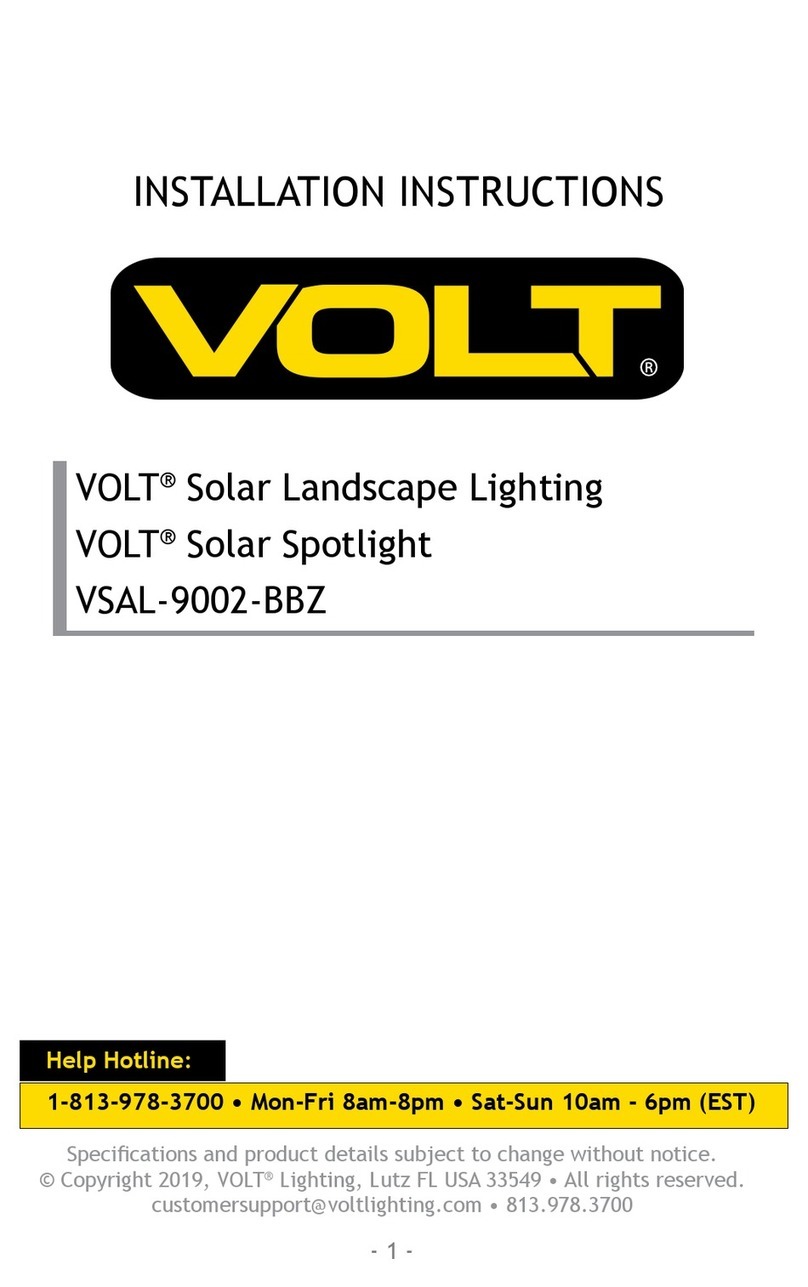
AFTER THE HOT SPOT is correctly positioned, tighten the two thumb screws to lock this
adjustment in place. To verify that the bulb is at the optical centerline, turn the focus control clockwise to again
project Spot A. The dark spot should remain centered in the spot projection as shown.
ROTATE THE BULB FOCUS CONTROL (center section) to obtain the brightest light with
even, flat light distribution (Spot B). To sharpen the edge of the spot, rotate the spot fine focus control (large
knurled knob) located immediately behind the color boomerang.
A SECOND METHOD of aligning the xenon bulb is to project the spot to the stage, and using
the bulb adjustment controls, obtain a hot spot in the projected spot. Center this hot spot in the projected
spot by moving the entire control section around the two thumb screws. Once the hot spot is centered, or
slightly above center in the projected spot, lock the adjustment control in position with the two thumb screws
and rotate the focus control (center section) to obtain a bright spot with an even distribution of light. To sharpen
the edge of the spot, rotate the knurled focus control knob located on the side of the lens mechanism.
THIS BULB POSITIONING ADJUSTMENT should not be disturbed until the xenon bulb is
either rotated or replaced. At this time it will be necessary to repeat the above bulb alignment procedure.
REPLACE THE REAR COVER PLATE over the bulb adjustment control mechanism.
Secure in place with the (3) black phillips head screws and finish washers.
BECAUSE OF MANUFACTURING TOLERANCES and normal bulb aging, it may be nec-
essary to operate one lamp at slightly higher or lower current than others to obtain equal light balance between
two or more units. These current adjustments are made at the xenon power supply.
TO EXTINGUISH THE ARC, place the LAMP switch in the OFF position. The blowers in
the lamphouse will continue running until the xenon power supply is de-energized. Allow the blower to operate
and cool the bulb for at least ten minutes after extinguishing. This measure is required to comply with the bulb
manufacturers warranty conditions.
TO PROLONG BULB LIFE, and to encourage rapid bulb starts, it is recommended to douse
out using the choppers or the fade-out blades rather than extinguishing the bulb during dark periods between
cues. Multiple ignition pulses and warm re-starts consume more power and cause more bulb electrode wear
than sustained operation. While repeated ignitions are frequently unavoidable, and within design parameters, a
(20) minute delay between ignitions is desirable.
COMPLY WITH THE BULB MANUFACTURERS INSTRUCTIONS regarding rotation of
the xenon bulb at specified intervals. To rotate the bulb, loosen both the positive and negative clamps. Grasping
the metal end caps, rotate the bulb 180° and securely re-tighten both clamps. Adjust the xenon power supply to
increase the DC current to a setting at or just below the maximum level specified for the bulb. Project a white
spot to check for an even field; correct the bulb positioning as required. Operate the xenon bulb at this higher
current level for one or two performances, and then return the power supply setting to its previous level. This
temporary operation of the xenon bulb at high current following bulb rotation will restore the cathode tip and
enhance ignition at the new arc position.
RETURN BULBS upon which a warranty claim is being made to the theatre equipment dealer
through whom the unit was purchased. Pack the bulb in its original shipping carton with the protective cover
over the bulb. Complete and enclose all warranty forms supplied by the bulb manufacturer.Warranty credit will
not be allowed if the bulb failure is related to mishandling, incorrect installation, faulty supporting equipment,
or abuse.
ST2/013




















